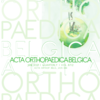Optimal ilio-sacral screw trajectory in paediatric patients : a computed tomography study
Ilio-sacral screws ; pelvic fixation ; computed tomography study ; paediatric population
Published online: Sep 14 2021
Abstract
Pelvic fixation during procedures performed to treat spinal deformities in paediatric patients remains challenging. No computed tomography studies in paediatric have assessed the optimal trajectory of ilio- sacral screws to prevent screw malposition.
We used pelvic computed tomography from 80 children divided into four groups : females <10 and ≥10 years and males <10 and ≥10 years. A secure triangular corridor parallel to the upper S1 endplate was delineated based on three fixed landmarks. The optimal screw insertion angle was subtended by the horizontal and the line bisecting the secure corridor. Student’s t test was applied to determine whether the optimal screw insertion angle and/or anatomical parameters were associated with age and/or sex.
Mean optimal angle was 32.3°±3.6°, 33.8°±4.7°, 30.2°±5.0°, and 30.4°±4.7° in the younger females, younger males, older females, and older males, respectively. The mean optimal angle differed between the two age groups (p=0.004) but not between females and males (p=0.55). Optimal mean screw length was 73.4±9.9 mm. Anatomical spinal canal parameters in the transverse plane varied with age (p=0.02) and with sex in the older children (p=0.008), and those in the sagittal plane varied with sex (p=0.04).
Age affected ilio-sacral screw positioning, whereas sex did not. Several anatomical spinal canal parameters varied with age and sex. These results should help to ensure safe and easy ilio-sacral screw placement within a secure corridor.
